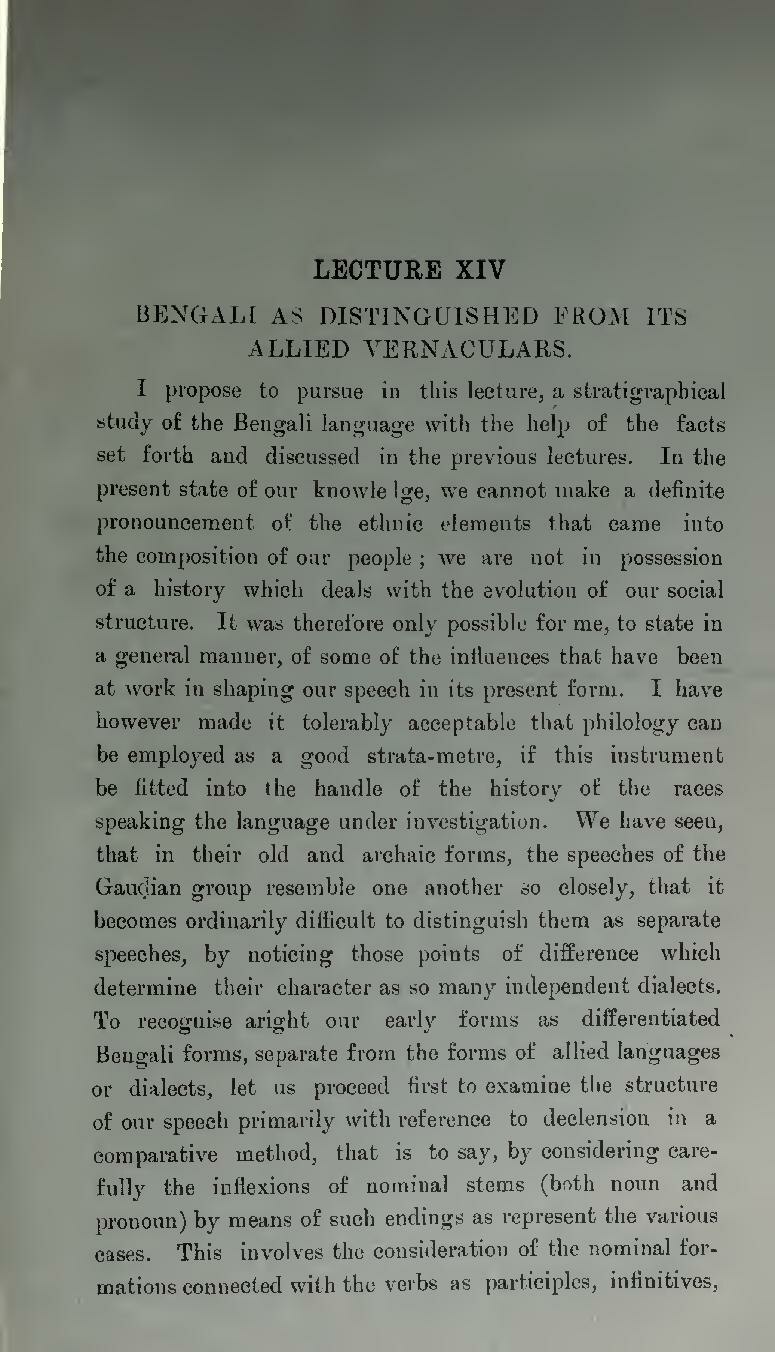LECTURE XIV
BENGALI AS DISTINGUISHED FROM ITS ALLIED VERNACULARS.
I propose to pursue in this lecture, a stratigraphical study of the Bengali language with the help of the facts set forth and discussed in the previous lectures. In the present state of our knowledge, we cannot make a definite pronouncement of the ethnic elements that came into the composition of our people; we are not in possession of a history which deals with the evolution of our social structure. It was therefore only possible for me, to state in a general manner, of some of the influences that have been at work in shaping our speech in its present form. I have however made it tolerably acceptable that philology can be employed as a good strata-metre, if this instrument be fitted into the handle of the history of the races speaking the language under investigation. We have seen, that in their old and archaic forms, the speeches of the Gauḍian group resemble one another so closely, that it becomes ordinarily difficult to distinguish them as separate speeches, by noticing those points of difference which determine their character as so many independent dialects. To recognise aright our early forms as differentiated Bengali forms, separate from the forms of allied languages or dialects, let us proceed first to examine the structure of our speech primarily with reference to declension in a comparative method, that is to say, by considering carefully the inflexions of nominal stems (both noun and pronoun) by means of such endings as represent the various cases. This involves the consideration of the nominal formations connected with the verbs as participles, infinitives,
